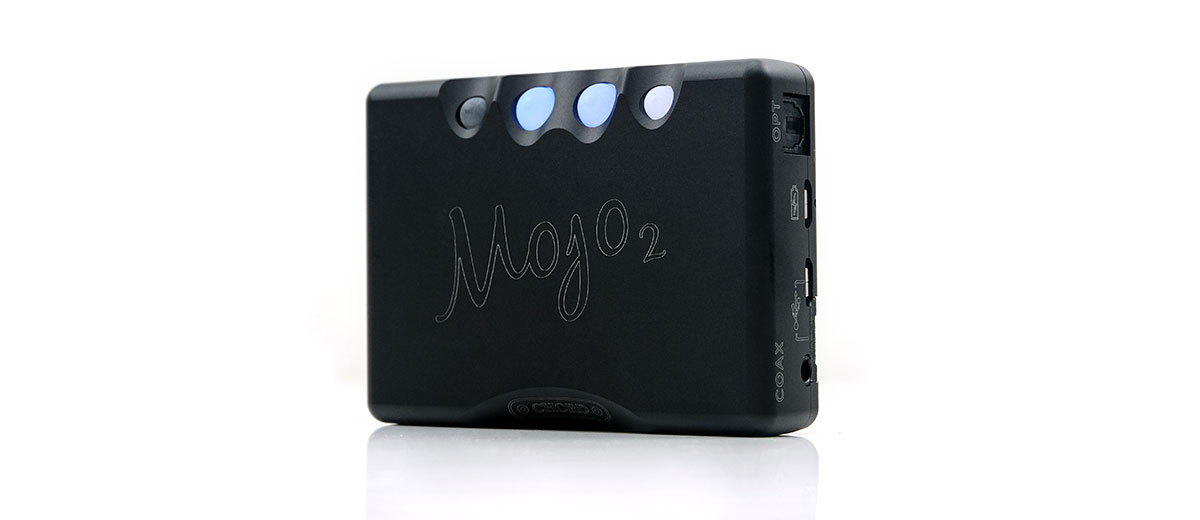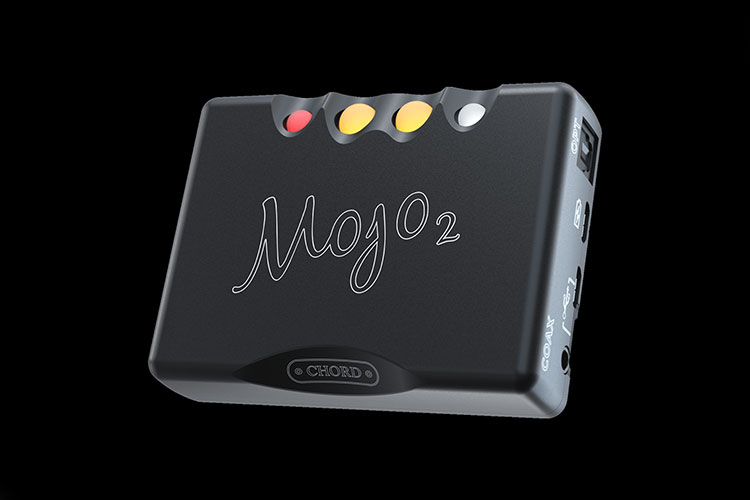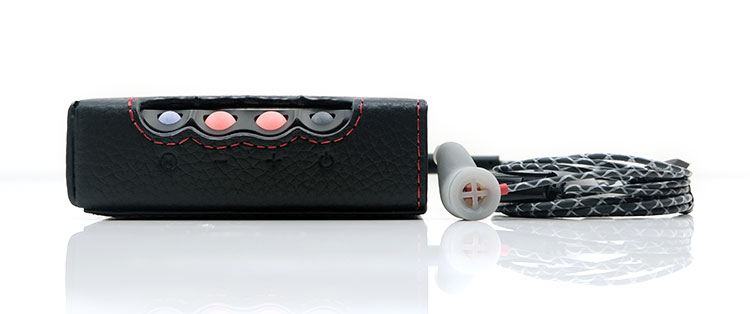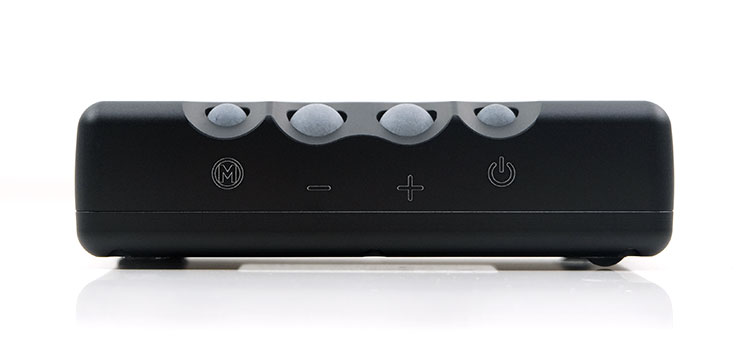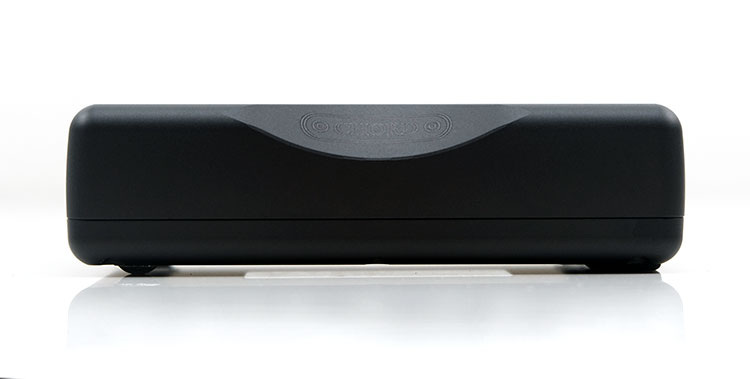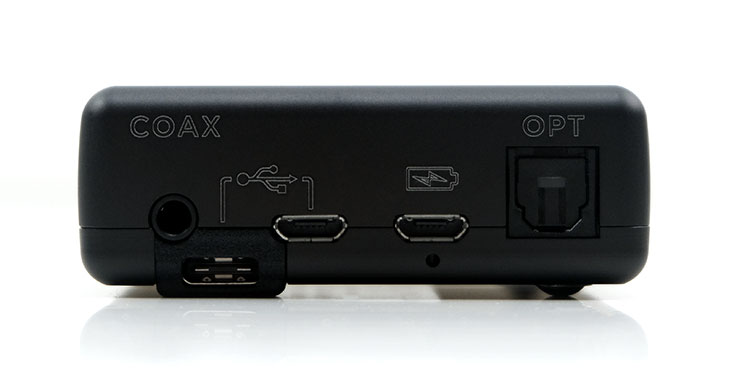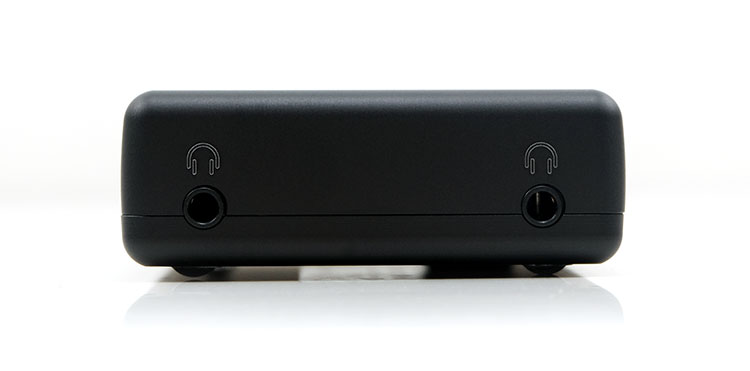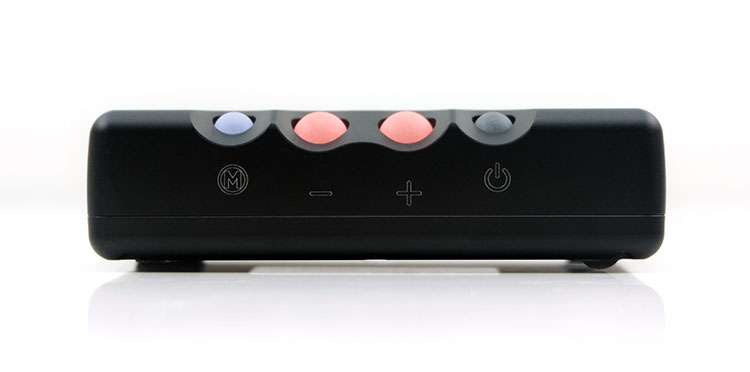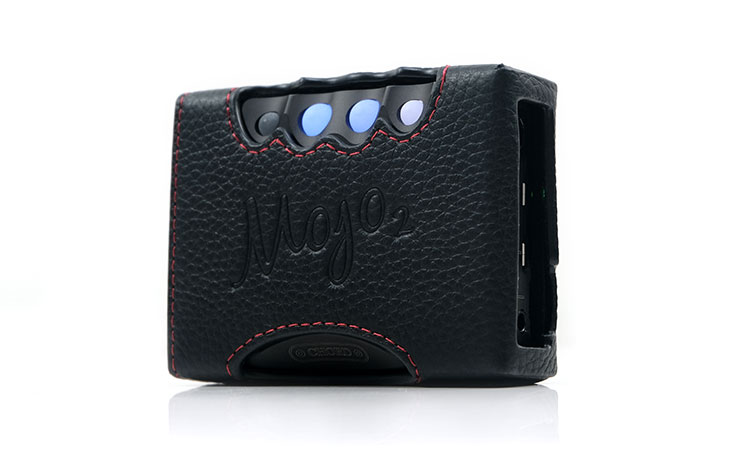Today’s review covers the new Chord Electronics Mojo 2 which is a 2nd gen portable amp and DAC featuring up to 32BIT/768kHz decoding and 600mW of power. It is priced at £449.
Disclaimer: This was sent to us as a sample for our honest opinion. Headfonics is an independent website with no affiliate links or services. We thank the team at Chord Electronics for giving us this opportunity.
You can read more about Chord Electronics products we have previously featured on Headfonics by clicking here.
Note, that this article follows our latest scoring guidelines which you can read up on here.
It has been 6 years since the original Mojo was launched by Chord Electronics and 5 years since we reviewed it. That seems like an eternity in audiophile years considering the rapid advancement in tech as well as changing consumer tastes.
And yet, the Mojo remains or has remained very relevant, perhaps one of the longest product life cycles I have seen in the portable amp/DAC sector. I cannot think of a single person in this hobby who has not tested, owned, or at least tried the Mojo. Everyone seems to have an opinion on this little box of tricks.
The recently launched Mojo 2 complete with a host of new features should come as no surprise then to ardent Chord fans. The price is certainly reasonable and not far off the original’s 2015 price point of £449. The only question for me is does it perform better than the original and with a bevy of class-leading audiophile dongles saturating the market is it still relevant?
Tech Highlights
DAC
A consistent theme throughout Chord’s digital audio conversion products is their in-house FPGA-driven DAC implementations with no off-the-shelf delta-sigma or R-2R designs. The Mojo 2 is no exception with an FPGA-driven WTA, (Watts Transient Aligned), filter at the heart of its decoding engine.
The Mojo 2 does still retain the original Mojo’s Xilinx Artix 7 FPGA chipset, (XC7A15T), which is the same board used inside the Hugo 2. As of today, it is still Xilinx’s most advanced FPGA board, however, the board’s custom coding done by Rob Watts is quite different from the original Mojo.
One of the most notable KPIs of the original Mojo has also been given a boot, the number of FIR taps. From the original’s tap count of 38,912, we now have 40,960 taps using 40 DSP cores which is now that little bit closer to the performance level of the Hugo 2, (49,152).
A few other engineering upgrades that have a significant knock-on effect include DC-coupling the Mojo 2. This reduces the need for additional capacitors to filter the signal and allows a full spectrum of sound frequencies to pass through without any potential degradation.
With this switch, Chord is pitching the Mojo 2 as offering a more neutral or accurate sound over the original. This is also combined with an improved noise-shaper and some upgrades in the Pulse Array implementation to generate an improved perception of staging depth and detail as well as lower distortion levels.
Decoding
As far as I can tell, decoding remains largely unchanged from the original Mojo. That means the ability to decode up to PCM 32BIT/768kHz and DSD256 natively. You can also dual data connect the Mojo via the coaxial output to the Hugo M Scaler to make use of its upsampling ability giving you a maximum of PCM705/768 kHz.
Some might quibble that DSD256 was class-leading back in 2015 and in 2022 it should really be DSD512. However, you will not find too many commercial recordings above DSD256 to make a valid use case and Chord does contend that PCM is superior to DSD from the outset.
So, bragging rights on paper goes to the plethora of delta-sigma infused DAPs and portable amp/DAC’s chugging out DSD512 capability via USB but for the majority of users, I suspect DSD64 to DSD128 is going to be just fine.
Another principled stand by Chord is the lack of MQA. Chord has long since contended that MQA is not an ideal format given their issues with the low tap length interpolation filter and the method of compression for the unfolding process.
The Mojo 2 also has no inbuilt wireless connectivity. However, you can add that via the Poly since it retains full compatibility (with the latest firmware) in terms of connecting it and operating it in the same way as with the original Mojo.
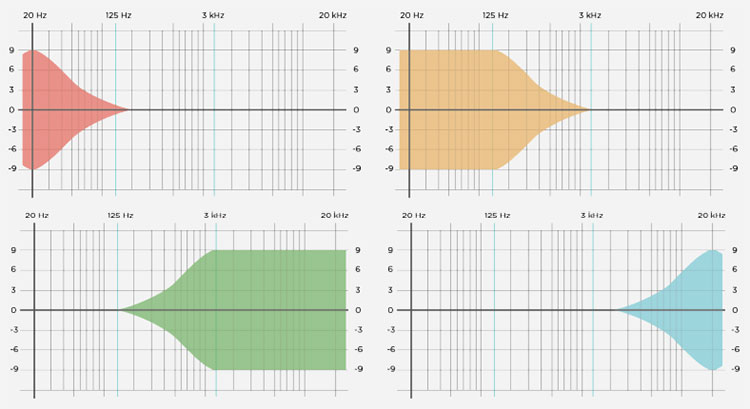
UHD DSP
This is a completely new feature on the Mojo 2 and stands for Ultra High Definition DSP. This is a proprietary feature using a 104-bit custom DSP core running at 705/768 kHz targeting the entire frequency range.
On a high level, you now have access to 4 equalization modes: two that target the low-end, (sub-bass and mid-bass), one that targets the mid to upper-mids, (3k), and the final one that targets the highs up to 20k.
From the graph above you would think these are simply inflexible EQ shelves but it’s more complex than that. The enhanced control system of the Mojo 2 allows you to either lift or cut that shelf in dB increments up to 9dB in either direction.
They are also not single-mode DSPs, you can combine all 4 by adjusting each one individually to get a desired overall curve to match your gear to your desired performance. You can read more about how UHD DSP performs in our Synergy section on page 2.
Amplifier
As far as I am aware the Chord still uses a Class A amplification topology inside the Mojo 2. This is a single-ended topology that is consistent with Chord’s entire amplification lineup. You will not see a balanced output save for pre-amping XLR output to power amps on the likes of the Hugo TT2.
As before, the Mojo 2 uses two 3.5mm PO outputs that can be connected to two IEMs or headphones at the same time. The power is good, though in 2022, not class-leading given some of iFi Audio’s gear can hit 1W into 60Ω.
However, I would class this as fairly powerful for an SE output and plenty of headroom for moderate loads. You can get up to 600mW into a 32Ω load down to 35mw into 600Ω and 90mW into a 300Ω load. The Mojo 2’s dynamic range performance also remains the same as the original at a very impressive 125dB.
Design
At first glance, the overall aesthetics from the old to the new Mojo 2 look almost exactly the same aside from a new smaller 4 button array. However, once you spend a bit of time with it you start to pick up some of the more nuanced changes.
Legacy Aesthetics
Let’s start with the legacy design points, the Mojo 2 is built like a tank and refreshingly compact in this era of huge DAPs at 83mm x 62mm x 22.9mm and just 185g. On paper, that is 5g more than the original which might well be due to the additional USB-C port and orb designs but either way, it is very consistent with the dimensions of the original.
The tank-like construction comes from a beautifully machined solid bead-blasted aluminum casework finished in anodized black. The original Mojo construction was incredibly robust so the Mojo 2 is no different in that regard. At the same time, it is very hand-friendly with no sharp corners anywhere in the overall design.
Changes
So, what are the changes? The obvious is the new smaller four orbs made of polychromatic polycarbonate replacing the original’s large 3 button orbs. This is to allow for the implementation of Mojo 2’s new menu control system as well as legacy features such as power and volume control.
Note, though entirely accessible the orbs have a little less flexibility compared to the original. They only have a vertical or click-based movement whereas the original orbs could be rolled in all directions with the tip of your finger.
The second big change is the addition of the USB-C port to the rear of the Mojo 2. Curiously, it is not part of the original machining and my assumption here is that there was no desire to fatten the casing to accommodate it.
The net result is a separate plastic enclosure right at the base that doubles as one of the 4 feet on the base with the other 3 being regular silicone beads and a slight widening of the seal between the top and bottom aluminum shells.
Other more nuanced changes include doing away with the 4 slits accenting each corner from the original aluminum casing and a smaller more oval-like finish to where the Chord emblem is printed. Speaking of printing, the labels are more muted on the Mojo 2 compared to the brighter white of the first edition.
I/O
The Mojo 2 retains all the original inputs and outputs (I/O) including the dual 3.5mm SE outputs to the front and added the new USB-C port to the rear. This new port will duplicate the micro-USB just above it for data and OTG functionality.
The charging port to the right remains the same micro-USB port though battery management and charging have improved significantly over the first Mojo, (more detail below in the battery life section).
Yup, I know what you are thinking, it is 2022 so what on earth is Chord doing messing around with micro-USB ports? I suspect the answer lies in the need to keep the Mojo 2 entirely compatible with the Poly streamer which uses a dual micro-USB connectivity panel to both charge and handshake with the Mojo 2, (and the original).
It is a handicap in some ways if you do not wish to use a Poly and might create a chick and egg situation should a Poly 2 be on the cards since it might have to retain micro-USB to work with the Mojo 2.
The good news is for data, you do not have to use the micro-USB port at all. The USB-C will do everything except charge the device. If you are not a USB believer then you also have the option of legacy coaxial and optical connections on either side of the rear panel of the Mojo 2.
If you are fully loading all the connections on the Mojo 2 the device will select the priority source in a specific sequence with USB the default followed by coaxial and optical. You cannot connect the micro-USB and USB-C to different sources at the same time and micro-USB has priority over the new USB-C port.
Compatibility
One important development since the launch of the original Mojo is the compatibility with the Hugo M Scaler. Now, I do not recommend you buy the M Scaler purely for the Mojo but if you already have it you can dual data to the Mojo 2 via the coaxial jack using a dual data cable, (dual BNC to coaxial 3.5mm mini).
This will allow you to upsample your low sample rate audio files up to a massive 768kHz via a PC or Mac through to the M Scaler and out the Mojo 2. You do need a bespoke cable to do that with a dual BNC on one end and a 3.5mm mini male jack on the other.
Controls
The Orb control system remains but now there is an additional layer of complexity added with the new menu system 4th button to the far left. Each button has been clearly labeled in terms of its primary or default function, but as ever with Chord’s orb controls they have multiple layers of functionality.
The main thing to remember when operating the orbs is the color-coding indicating a wide range of different modes and statuses. I will admit this will require you to study the manual carefully as it can be a steep learning curve.
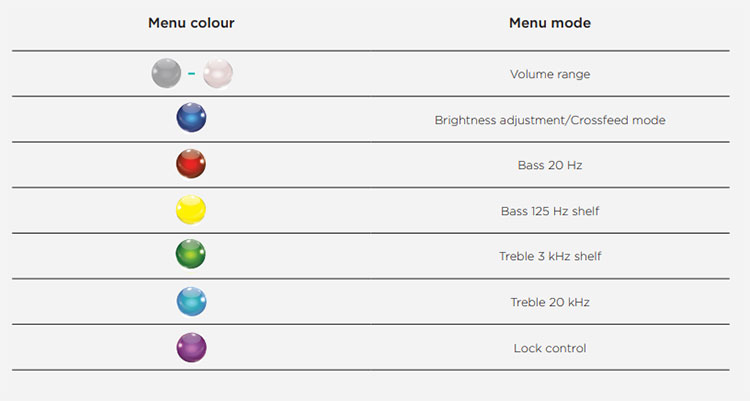
The menu button itself is fairly simple enough once you spend a bit of time using it. Beyond the first two colors, the next 4 are your DSP and the final purple color is the lock control which turns off access to all the orbs bar the menu orb itself.
The menu mode you select will also affect the subsequent functionality of the central 2 orbs beyond its default volume control system. Here is where you can start to fine-tune aspects such as the UHD DSP shelf lift or cut, (18dB swing), one of the crossfeed filters, or dim/turn off the LED lighting with the brightness control mode.
To the far right, the power on/off will also indicate your current audio sample rate, also through a similar color scheme to the original meaning red for 44.1K up to white for DSD.
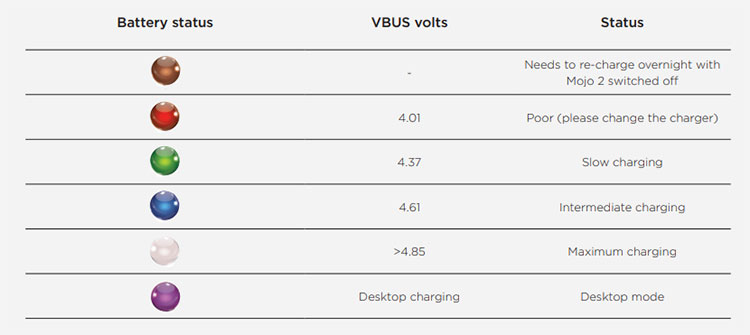
Battery Life
Chord has tweaked the battery life and management system to improve the performance of the Mojo 2 compared to the original.
You still have to charge the Mojo 2 via the provided micro-USB port to the rear and as far as I am aware there is no quick charging functionality built into its battery management.
However, it is now FPGA-based which basically means the Mojo 2 has a programmable power source to better control efficiency levels, heat dissipation, and up the overall battery life by almost 10%.
Granted, the original and the new Mojo 2 are both rated at 8 hours officially but most found the original would dip under that marker whereas I found the new Mojo 2 to last a bit longer under similar conditions. Certainly, much closer and sometimes above the official 8-hour rating depending on what you are doing with it.
Charging
As per the above image, you can get a quick idea of how fast your Mojo is charging via an orb color scheme when switched off. Ideally, you want to go for white or 4.85V upwards for a maximum charging rate to get the shortest charge time possible.
You can also check your charging status with a small LED light below the micro-USB port. Blue is maximum all the way down to ‘red is dead’ so to speak. One thing that is new is the intelligent desktop mode for charging.
Basically, this means that when the battery is fully charged this mode protects the battery from potential damage from overcharging allowing you to continue to use the Mojo 2 when connected to a power source.
Chord recommends a charger rated for a minimum of 2 A (amps) and no, it does not come with one but you can use the supplied USB cable to hook it up to your PC USB port and charge there.
Packaging & Accessories
Tiny device tine package. The dimensions of the Mojo 2 packaging are roughly the same as the original Mojo as is the overtly white color scheme from the 2015 box I received for that review. I do remember seeing a few revised editions of the original Mojo in a black box over the years with some limited edition larger versions also specifically for display or reviewers.
The internal packaging is very simple with plenty of foam padding and a small vinyl sheet that protects the Mojo 2 itself. The accessory line-up is even simpler with a very short USB-C to USB-A and some user instructions/manual and your warranty card.
Note, there is also a QR code on the backplate of the Mojo alongside your serial number so you can register the Mojo 2 for warranty support on the Chord main website.
For those after a leather carrying case, I can confirm that Chord will be selling an optional Van Nuys-inspired leather case for the Mojo and the Mojo/Poly bundle that’s very similar to the original Mojo design. We have one here and have been testing and there are some pros and minor cons to it.
In terms of pros, the leather is as refined and pliable as the original case with plenty of room to operate the buttons and no sign of the Mojo 2 ever inadvertently slipping out. It also feels like it is built to last with no flimsy owners or edges.
A slight con is the rear of the case which recesses the back panel of the Mojo 2 slightly. This can make inserting some thicker micro-USB cable barrels a bit fiddly as you have to bend the edge of the leather case slightly to allow for a smooth connection. Not always though, some narrower ones are just fine so it will depend on what cable you actually have.
Click on page 2 below for sound impressions and UHD DSP Pairings

